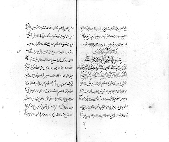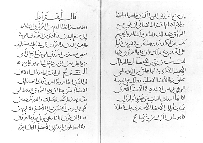Islamic Culture and the Medical Arts
Greek Influences
The medical theories inherited particularly from the Greek world supplied a thread of continuity to professional learned medical practice throughout the medieval Islamic lands. The caliphs al-Mansur, Harun al-Rashid (of the Thousand and One Nights fame), and al-Ma'mun are noted for their patronage of learning and medicine. When suffering from a stomach complaint, al-Mansur, who ruled from 734 to 775 (158-169 H), called a Christian Syriac-speaking physician Jurjis ibn Jibra'il ibn Bakhtishu`to Baghdad from Gondeshapur in southwest Iran. His son was also called to Baghdad in 787 (171 H), where he remained until his death in 801, serving as physician to the caliph Harun al-Rashid. The third generation of this family, Jibra'il ibn Bakhtishu`, was physician to Harun al-Rashid and to the two succeeding caliphs in Baghdad. For eight generations, well into the second half of the 11th century, twelve members of the Bakhtishu` family were to serve the caliphs as physicians and advisors, to sponsor the translation of texts, and to compose their own original treatises. A remarkable, if not unique, record in the history of medicine.
Early in the 9th century, there was established in Baghdad a foundation called the House of Wisdom (Bayt al-Hikmah), which had its own library. Its purpose was to promote the translation of scientific texts. The most famous of the translators was Hunayn ibn Ishaq al-`Ibadi, a Syriac-speaking Christian originally from southern Iraq who also knew Greek and Arabic. He was the author of many medical tracts and a physician to the caliph al-Mutawakkil (ruled 847-861/232-247 H), but he is most often remembered as a translator, an activity he began at the age of seventeen. He produced a truly prodigious amount of work before his death in about 873 (260 H), for he translated nearly all the Greek medical books known at that time, half of the Aristotelian writings as well as commentaries, various mathematical treatises, and even the Septuagint. Ten years before his death he stated that of Galen's works alone, he had made 95 Syriac and 34 Arabic versions. Accuracy and sensitivity were hallmarks of his translating style, and he was no doubt responsible, more than any other person, for the establishment of the classical Arabic scientific and medical vocabulary. Through these translations a continuity of ideas was maintained between Roman and Byzantine practices and Islamic medicine.
A very rare copy of Hunayn ibn Ishaq's Arabic translation of Galen's introductory treatise on the skeletal system,
On Bones for Beginners, known in Latin as De ossibus ad tirones.
NLM MS P26,
opening at fols. 62b-63a, the beginning of the treatise
A number of Hippocratic treatises circulated in Arabic translations made at this time, as well as the writings of more than a dozen other Greek physicians and some Syriac, Persian, and Indian medical writers. Knowledge of medicinal substances was based initially upon the illustrated treatise on materia medica written in Greek by Dioscorides in the 1st century. Several Arabic translations and revisions of his treatise were undertaken in 9th-century Baghdad and in 10th-century Spain and later.
A commentary on the Hippocratic treatise On the Nature of Man by Ibn al-Nafis (d. 1288/687 H). The copy was completed on 1 November 1269 (4 Rabi` I 668 H) by his pupil who worked from Ibn al-Nafis's autograph copy.
NLM MS A69, fols. 47b-48a.
No other copy recorded.
No single figure was of greater influence upon medieval Islamic medicine than Galen. In his writings Galen displayed a firm belief in a spiritual Providence and in the foresight and design of the Creator as exemplified in the human form -- ideas acceptable to Muslim physicians. The combination of philosophy and medicine, which is so evident in the writings of Galen, continued to be a part of medieval Islamic medical literature.
Last Reviewed: December 15, 2011




